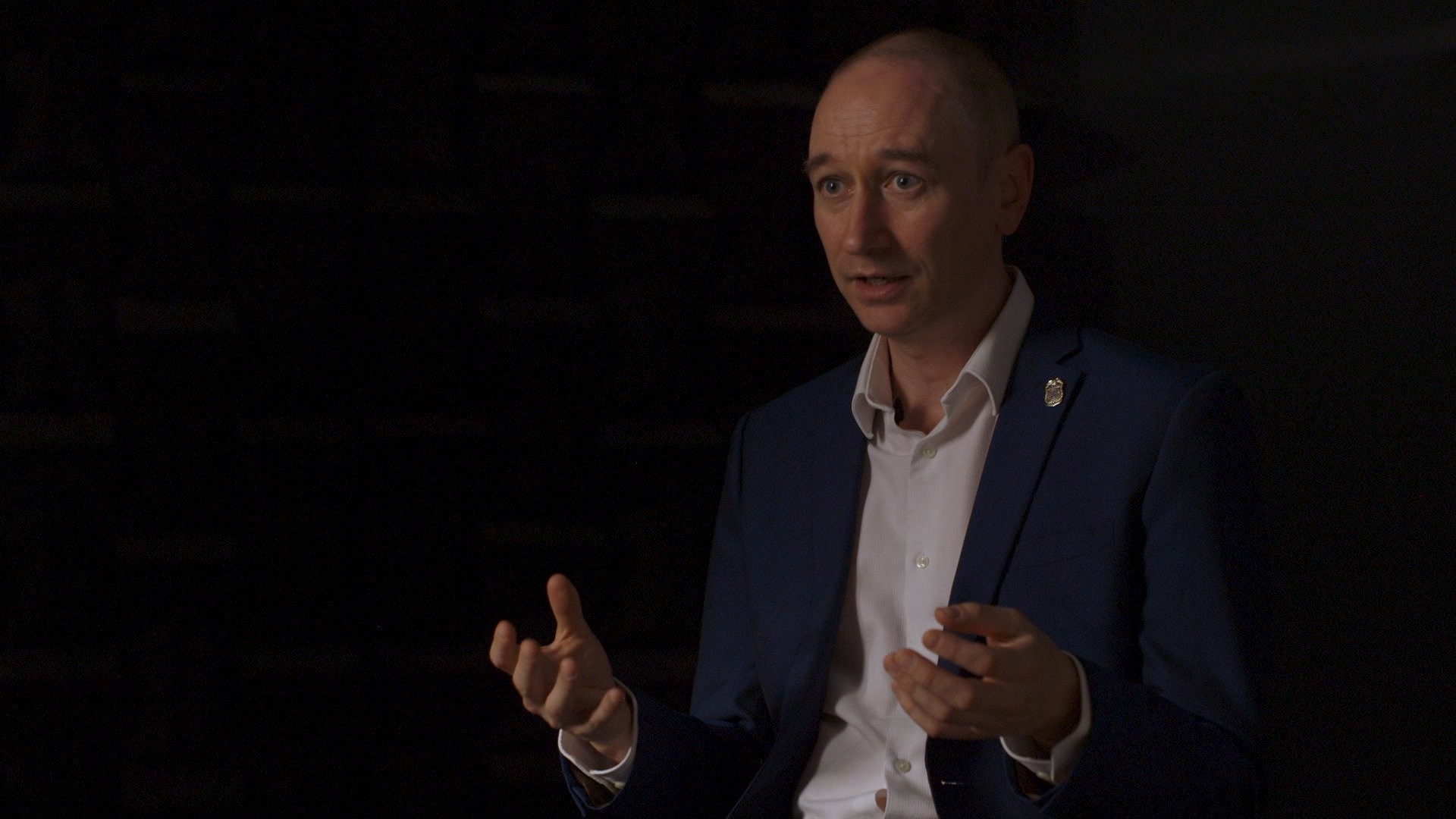Quaaludes were not exactly legal in the context of 'The Wolf of Wall Street,' but you get the idea. Photo courtesy Paramount Pictures
Among the disturbing allegations that threatened to scuttle the nomination of doctor Ronny Jackson for secretary of veterans affairs last month was the claim that he handed out sleeping pills and stimulants to White House staff "like candy."

But that wasn’t what sunk him. In fact, Politico found "nearly a dozen current and former officials" who admitted that "casual use of some prescription drugs is an established fact of life at the highest echelons of government." The commenters included two Congressmen—one Democrat and one Republican—who went on the record about it."I might have tried that once; it didn’t work, and I’ve never tried it again," Democratic US Senator Dick Durbin told the outlet. “But people trying to avoid jet lag and go back to work and have a normal life? Sure.” Likewise, former Republican presidential candidate and US Senator Marco Rubio was quoted as saying of prescription sleep medication for jet lag, "I’ve seen it used."And it’s not just politicians. Business executives, entrepreneurs, Ivy League students—pretty much anyone with some degree of wealth and status who desires it can get a prescription that allows them to engage in what would otherwise be labeled as recreational drug use. In practice, these people are taking drugs to wake up, sleep, or just relax, often without having any diagnosed psychiatric problem. This helps protect the powerful both from potential criminal consequences of possession, and from health dangers associated with the impurity and variability of drugs and street markets.To much of America, such use might seem normal and unremarkable. But until we recognize it for what it is—a way for one group of people to dodge drug prohibition—we can’t really understand the deep flaws in the way the country regulates drugs and the flexibility of "medicine" to protect some and punish the rest. If we want to solve the opioid crisis and better manage addiction, pain and other issues that can involve the use of psychoactive drugs, we need to make the hypocrisy visible: Prescriptions can be used to validate some people's pain and distress as worthy of treatment, while leaving others to suffer.This is not to say, of course, that there aren’t absolutely appropriate medical uses of sleep, anti-anxiety, opioid and stimulant medications. But too often, the way America makes the distinction between licit and illicit drug use is by looking, explicitly or otherwise, at the race or class status of the patient, not the intent or result of their drug use."This is a two-tiered national drug policy that has existed for over a hundred years now, which is based on and also reinforces racial and class hierarchies," said Helena Hansen, MD, PhD, assistant professor of psychiatry at New York University.In some instances, the exact same use of the exact same substance can result in prison for one group of people and praise for another. For example, fighter pilots have historically been provided with stimulants ("go pills") to stay awake on long missions—including various forms of amphetamine. But if truckers take their own amphetamine (a.k.a. "speed") for precisely the same reason, they can lose everything.The idea of prescriptions as permission slips for certain people to use drugs recreationally goes back to the origins of America’s drug laws at the turn of the 20th century. At that time, heroin, cocaine and opium were sold without restriction. Makers of "patent medicines" weren’t even required to disclose what was actually in their powders, potions and pills. Not surprisingly, addiction problems emerged.This helped spur the passage of the Pure Food and Drug Act of 1906, which did not criminalize psychoactive drugs, but did require labeling and created the foundations of what is now the Food and Drug Administration (FDA). Without adding legal penalties for drug possession or imposing new limits on supply, the use of opiate-containing medications eventually dropped by 24 to 50 percent.Nonetheless, at the time, fears were rising about the effects of certain drugs on certain people—often stirred up by sensational media accounts and politicians wanting to make a name for themselves.Then, as now, immigrants and racial minorities were the primary targets. Some of the first state drug prohibitions were passed in the West to target Chinese immigrants who smoked opium and in the South, by stirring up fear that—I’m not making this up—cocaine would make black men both better "marksmen" and also, somehow, impervious to bullets.Meanwhile, among the first groups of Americans with addiction to be labeled as innocent victims of overprescribing doctors and unscrupulous pharmaceutical companies were, you guessed it, white middle- and upper-class women."Physicians widely prescribed morphine to women, often initially for menstrual pain," said Caroline Jean Acker, associate professor emeritus of history at Carnegie Mellon University and author of Creating the American Junkie: Addiction Research in the Classic Era of Narcotic Control. "But guess what? It calmed their nerves.” At the time, there was great public interest in
"temperance" and avoiding the harms associated with intoxication, she added. “Physician prescribing of morphine absolved [these women] from any such concern.”In 1914, the Harrison Narcotics Tax Act was passed, nationalizing the prohibition of recreational drugs like cocaine and opiates. As coke and heroin were increasingly demonized as vices of dangerous young working- and lower-class men, particularly black men, criminalization intensified. By 1919, it was clearly illegal for doctors to knowingly prescribe opioids to maintain addiction, as opposed to treating pain.Since then, only two official exceptions have been made to allow medication treatment with opioids for addiction: methadone and buprenorphine. The distinct regulatory regimes for each of these drugs, however, just further demonstrate that it is the way we see the person who takes drugs—not the substances themselves—that matters most in America.Methadone was introduced in the 1970s, with enormous restrictions on how and where it could be prescribed. It was literally ghettoized: It could not (and still cannot) be prescribed for addiction outside of specialized clinics, which are overwhelmingly located in poor, black and brown neighborhoods."It was quasi-criminalized," said Hansen, noting how the clinics themselves tend to look like prisons (the one I attended when recovering from my own addiction actually had a "man trap" in the doorway like those used to ensure prisoners don't rush from one prison hall to another). Regulations have generally required daily attendance, at least for several months—as well as frequent, observed urine samples. This is why some patients call methadone the "orange handcuffs" (it has historically been dispensed in orange-flavored liquid).Buprenorphine—in part because regulators realized that the methadone system was overly restrictive—was made available for medical use under a much different kind of policy. As of 2002, it could be prescribed by any doctor who took a brief training course, anywhere in the medical system (although there is a cap on the number of patients that one doctor is allowed to treat). Patients can pick it up monthly at pharmacies, like any other prescription. Not surprisingly, buprenorphine has taken off now that the opioid epidemic is largely seen as white.The result is another segregated system where middle class, mainly white people with addiction are more likely to have their addiction treated like a real illness—while many black and Latinx people are relegated to a more punitive and controlling regimen. A tragic result is that some who might benefit from one of the only two medications we have that cuts the death rate from opioid addiction at least in half are deterred by costs, stigma, the over-regulation of methadone, or all three."One of the unheralded jobs of American physicians has been to help relatively privileged people deal with stress and anxiety by providing access to relatively safe drugs," said David Herzberg, associate professor of history at the State University of New York in Buffalo and author of Happy Pills in America: From Miltown to Prozac. In other words, a white woman can pop a Xanax, but a black man smoking a joint is somehow unacceptable.Of course, one of the deepest ironies of this racist system is that it often doesn’t actually protect white people: marijuana is far safer than either Xanax or opioids, whether used "medically" or "recreationally." And the movements to legalize medical and recreational pot have been increasingly successful in part because they make clear how arbitrary those distinctions can be.But while states make headway, the bizarre fact is that because of America's history, the federal government only allows recreational use of three substances OK’d by colonial powers in the 20th century: alcohol, tobacco and caffeine. Any other use has to somehow become "medical," get approved at the state level, or else be subjected to criminal penalties. There is no viable regulatory pathway to approve new recreational drugs nationally. Until we recognize just how absurd this is, we won’t have sane drug policy.Herzberg, for his part, noted that the distinction between medical and non-medical use was essentially “a binary, created out of nothing.” But it has very real consequences, which Americans tend to simply accept because they don’t question these categories or know how irrational their laws really are.Sign up for our newsletter to get the best of VICE delivered to your inbox daily.Follow Maia Szalavitz on Twitter.

But that wasn’t what sunk him. In fact, Politico found "nearly a dozen current and former officials" who admitted that "casual use of some prescription drugs is an established fact of life at the highest echelons of government." The commenters included two Congressmen—one Democrat and one Republican—who went on the record about it.
Advertisement
Advertisement
Advertisement
"temperance" and avoiding the harms associated with intoxication, she added. “Physician prescribing of morphine absolved [these women] from any such concern.”
Advertisement
Advertisement
Advertisement
